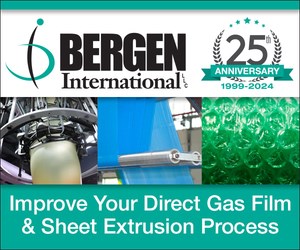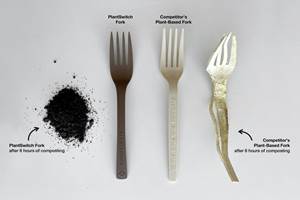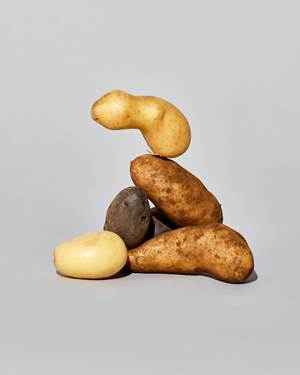Thermoforming PLA: How to Do It Right
Polylactic acid (PLA) resins are made from 100% renewable resources such as corn, sugar beets, or sugarcane.
Polylactic acid (PLA) resins are made from 100% renewable resources such as corn, sugar beets, or sugarcane. This clear thermoplastic is fully compostable and biodegradable but has properties very similar to petroleum-based resins that are typically converted into sheet for thermoforming. Thermoformers who are considering switching to PLA can run it without any major modifications to their equipment or tooling. However, there are some important considerations that need to be addressed before successfully switching from familiar thermoformed materials like oriented PS and PET to PLA.
For one thing, PLA sheet is quite brittle at room temperature and requires some special handling and storage considerations. There is a greater risk of cracking and breaking during shipping compared with OPS or PET, for example. Neither the sheet nor the finished product can be stored at temperatures above 105 F or greater than 50% relative humidity. Exposure to high temperatures or humidity, even for a short period, can cause the material to deform and eventually break down. Sheet and formed products must be transported in cooled trucks and stored in a climate-controlled warehouse.
All of GN Thermoforming Equipment’s testing on PLA has used our contact-heat, cut-in-place thermoforming system. It permits all heating, forming, and cutting of the material to be performed in a single station using compressed air, without the need of a pre-stretch plug or vacuum.
Prior to thermoforming with a new roll of PLA sheet, processors need to establish a starting point for the heating platen temperature. PLA has a low forming temperature compared with petroleum-based plastics. Begin by setting the platen temperature at 140 F, then take a small piece of PLA, hold it on the hot plate, and increase the temperature in increments of 40 F until the material starts to get sticky on the plate. This helps you arrive at a good starting temperature. A preheater is not required for PLA and tends to make the material dry out too quickly without providing any forming benefits.
There tends to be a very narrow temperature window for the heating platen when forming PLA—as little as a couple of degrees in certain blends of the material. If the sheet is too hot, the PLA will not form but “cook” onto the platen. If it’s too cold, the product will not form.
DESIGN AFFECTS MOLD TEMPERATURE
The mold temperature setting depends on the design of the mold. If the tool has bar locks, setting the mold temperature at approximately 104 F to 113 F will provide the best forming results. If there is an undercut on the tool, a mold temperature of 77 F to 86 F will allow the formed product to shrink a bit and eject from the mold easier. For example, a simple packaging tray without special features such as locks or undercuts typically can use a mold temperature anywhere between 77 F and 113 F, depending on the blend of the material.
First-time PLA processors can start by doing single production shots with the heating and forming time at 2 sec, and the other times (heat and form vent, eject delay, eject time, and cut dwell) at 0.2 sec. Adjust times up or down from there until you get a properly formed product, with good detail and acceptable clarity. Then set up a production run and reduce processing times as much as possible. The accompanying table lists process settings for similar products running on a contact-heat, cut-in-place forming machine using OPS, PET, and PLA.
Processors should keep in mind that various PLA blends will behave differently during thermoforming. Different PLA blends from different suppliers may require completely different process parameters. Overall, the cycle times for PLA are quite consistent with those of PET and OPS.
After the thermoforming process, when the PLA returns to room temperature, the skeletal waste web is very brittle and tends to break easily. This leads to difficulty in transporting the web and requires consistent tension control. Large rollers and a minimal angle when entering the transport rollers will help prevent the web from breaking.
Once PLA has been heated and stretched through the thermoforming process it loses some of its brittleness. Wall thickness in products can be reduced while still retaining product strength, and the formed parts are suitable for automatic stacking upon leaving the thermoformer.
Thermoformed parts made of PLA have excellent clarity, comparable to those formed in OPS and PET. This, combined with the temperature requirements for product storage, make thermoformed PLA suitable mostly for food packaging trays for baked goods, fruits, and vegetables.
Demand for PLA packaging is currently driven by eco-conscious retailers like Wal-Mart. Thermoformers are often less eager to run PLA sheet due to the material’s higher cost and special handling and storage requirements. However, the material does run very well on cut-in-place forming systems, and existing tooling does not require any major modifications to run it. PLA can also be formed on tunnel-heat, plug-assist machinery.
| PROCESS SETTINGS FOR OPS, PET & PLA | |||
|
0.018-
in. PLA |
0.020-
in. OPS |
0.18-
in. PET |
|
| Mold Temp., F |
105
|
113
|
113
|
| Heater Platen Temp., F |
212
|
280
|
257
|
| Heating Time, sec |
2.0
|
2.0
|
2.5
|
| Heat Vent Time, sec |
0.2
|
0.3
|
0.2
|
| Forming Time, sec |
1.5
|
1.2
|
1.2
|
| Form Vent Time, sec |
0.2
|
0.2
|
0.2
|
| Eject Delay Time, sec |
0.2
|
0.15
|
0.15
|
| Eject Time, sec |
0.2
|
0.2
|
0.2
|
| Cut Dwell Time, sec |
0.2
|
0.2
|
0.2
|
About the Author
William (Bill) Patey is Customer Service Team Leader for GN Thermoforming Equipment in Chester, Nova Scotia, Canada. He can be reached at (902) 275-3571 or at tech@gnplastics.com.
Related Content
50 Years...600 Issues...and Still Counting
Matt Naitove marks his first half-century in plastics reporting, with a few of his favorite headlines.
Read MoreAdvanced Biobased Materials Company PlantSwitch Gets Support for Commercialization
With participation from venture investment firm NexPoint Capital, PlantSwitch closes it $8M bridge financing round.
Read MoreCling Wrap Made from Potato Waste
Australia’s Great Wrap to expand into U.S. with home compostable cling wrap and its refillable dispenser made from recycled PET bottles.
Read MoreHow to Extrusion Blow Mold PHA/PLA Blends
You need to pay attention to the inherent characteristics of biopolymers PHA/PLA materials when setting process parameters to realize better and more consistent outcomes.
Read MoreRead Next
Beyond Prototypes: 8 Ways the Plastics Industry Is Using 3D Printing
Plastics processors are finding applications for 3D printing around the plant and across the supply chain. Here are 8 examples to look for at NPE2024.
Read MorePeople 4.0 – How to Get Buy-In from Your Staff for Industry 4.0 Systems
Implementing a production monitoring system as the foundation of a ‘smart factory’ is about integrating people with new technology as much as it is about integrating machines and computers. Here are tips from a company that has gone through the process.
Read More























